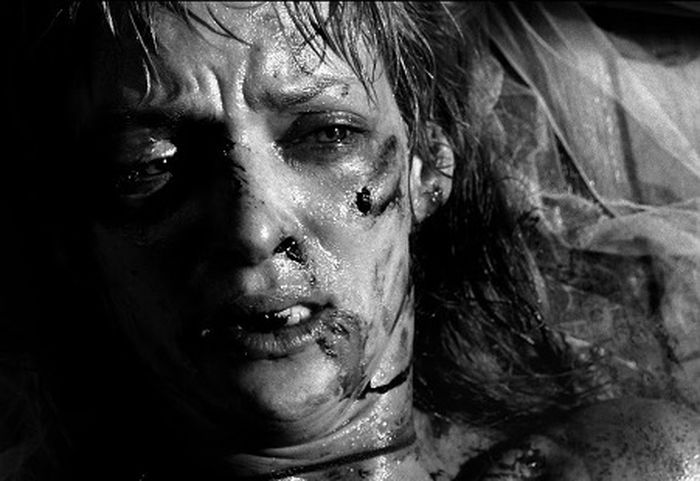Blair Witch: an Old-Fashioned Horror Story?
Felix Robertson examines the story of the Blair Witch, a surprisingly, chillingly successful story that will remain powerful for years to come
In 1999, a movie was made that should, by all accounts, have been pretty awful. Shot on a shoestring, directed by film students with no previous experience, and with no real script, the film consisted largely of shaky shots of trees. You would be forgiven for thinking it would have sunk without trace. Twenty-one years later, however, the Blair Witch Project stands as a landmark in movie history. Not only is it, dollar for dollar, one of the most profitable films in the world, but it also helped popularise an entire genre (the idea of ‘found footage’), as well as spawning a host of spin-off games and a sequel. The extraordinary ingenuity of the film’s marketing went a long way; the directors were among the first in the film world to recognise the potential of the internet, infiltrating early internet chatrooms, developing a rudimentary website, and convincing viewers that what they were about to see was real. The marketing scheme worked. The film terrified a generation of cinema goers, many of whom were so convinced that, as cast member Joshua Leonard told the Guardian, ‘my parents started getting condolence calls’.
“The mundanity is the final refuge they have left, at least until the chilling final dénouement reveals the hollowness of this defence”.
There is, however, much more to Blair Witch than just an innovative advertising campaign. Now in 2020, we can hardly be expected to believe that the story is true. And yet Blair Witch continues, despite all the odds, to be a singularly unsettling watch. It is worth noting just how unorthodox a horror film Blair Witch actually is. It contains no real jump scares, no threatening soundtrack, barely any blood, and (spoiler alert!) no depiction of the titular witch at all. What it does contain however, is a lot of superficially surplus mundanity; there is the constant fussing over the camera, including a huge amount of time devoted to getting it across a river, the regular discussion of food and cigarettes, and throughout it all a barely-structured but nearly constant obscenity-laden prattle.
It is tempting to see this mundanity as a quirk of the film’s style, or a moderately successful technique to make us empathise with the characters. But I would argue that, far from making the film less scary, it actually serves as an essential component of the film’s strange horror. The use of the banal in horror is not a new concept; in fact, one of the best examples dates from well over 100 years ago, in the ghost stories of M.R. James. His stories are not striking for their horrific imagery or sinister tone – quite the reverse. They’re disarmingly funny, at least at first. Perhaps the best example is James’ Oh, whistle, and I’ll come to you, my lad. It tells the story of a Cambridge professor who finds a mysterious whistle, which summons a series of ghostly apparitions. However, the story is also punctuated by moments of surprising frivolity, one character interrupting the tensest moments with deluded conspiracies about the Pope. At first, the effect is merely disorientating. But, as the story progresses, it becomes strangely effective, chiefly because the jokes never entirely succeed in alleviating the threat. Instead, the reader is left with an unnervingly confusing sense – both of the horror, and of the disturbing failure of humour to alleviate it.
This same technique is used in Blair Witch, and it is astonishingly effective. Throughout the film, the characters continually interrupt the increasingly bleak narrative with moments of mundanity, discussing the camera, their jobs – anything, it seems, to detract from their increasing plight. But while the tension is briefly alleviated, the moment passes before long, and the night begins to set in. The full horror of their plight returns, if anything more powerfully for its brief absence. It is striking that, in their final campfire conversation, Heather and Michael don’t discuss a way to escape or fight back against their stalker. Instead, they retreat into banalities, discussing how they like to spend time on their weekends. There will, of course, be no more weekends for them, and, perhaps, they know it. Yet, for them and the audience, the mundanity is the final refuge they have left, at least until the chilling final dénouement reveals the hollowness of this defence. And it is surely this piercing examination of human fear and frailty, more than any innovative advertising campaign, that will maintain Blair Witch’s chilling power for many years to come.
 News / Clare Hall spent over £500k opposing busway 24 December 2025
News / Clare Hall spent over £500k opposing busway 24 December 2025 Comment / The ‘class’ of Cambridge24 December 2025
Comment / The ‘class’ of Cambridge24 December 2025 News / Caius mourns its tree-mendous loss23 December 2025
News / Caius mourns its tree-mendous loss23 December 2025 Comment / Yes, I’m brown – but I have more important things to say22 December 2025
Comment / Yes, I’m brown – but I have more important things to say22 December 2025 News / Girton JCR publishes open letter expressing solidarity with Palestine25 December 2025
News / Girton JCR publishes open letter expressing solidarity with Palestine25 December 2025










